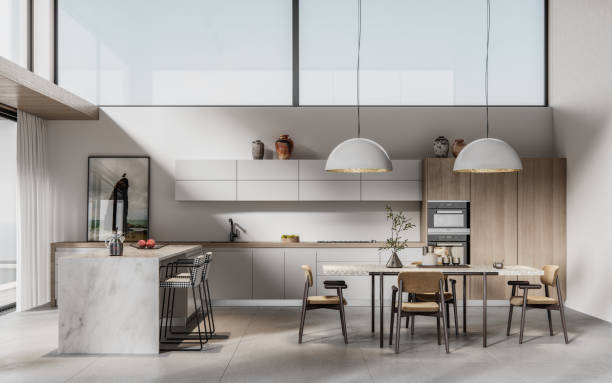kitchen and dining room tables

The kitchen and dining room are central spaces in any home, serving not only as places to prepare and enjoy meals but also as hubs for socializing, entertaining, and creating lasting memories. The tables within these spaces play a pivotal role in shaping the functionality, aesthetics, and overall atmosphere of these rooms. In this exploration, we delve into the various aspects of kitchen and dining room tables, examining their diverse styles, materials, sizes, and the impact they have on the overall design of these essential areas.
One of the primary considerations when selecting a kitchen or dining room table is its style. The design of the table can set the tone for the entire room, influencing the overall aesthetic and creating a cohesive look. Traditional, contemporary, farmhouse, industrial, and mid-century modern are just a few examples of popular styles that cater to different tastes and preferences.
Traditional tables often feature intricate detailing, such as turned legs and ornate carving, evoking a sense of classic elegance. In contrast, contemporary tables showcase clean lines, minimalist designs, and a focus on functionality. The farmhouse style, characterized by rustic elements and a cozy feel, has gained popularity for its warm and welcoming ambiance. Industrial tables often incorporate raw materials like metal and reclaimed wood, while mid-century modern tables highlight the sleek lines and geometric shapes of the mid-20th century design.
The material of the table is another crucial aspect that contributes to its overall appeal and durability. Wood, glass, metal, and composite materials are commonly used in crafting kitchen and dining room tables. Wooden tables, with their natural warmth and versatility, are perennial favorites. Hardwoods like oak, maple, and walnut are known for their durability and timeless appeal. Glass tables, on the other hand, can create an illusion of space and lend an airy, modern feel to the room. Metal tables, often made from materials like steel or aluminum, add an industrial edge to the space. Composite materials, such as engineered wood or laminates, offer a budget-friendly alternative without compromising on style.
Size is a critical factor when choosing a kitchen or dining room table. The size of the table should be proportional to the size of the room, ensuring that there is ample space for movement and comfortable seating. A small kitchen or dining area may benefit from a round or square table, optimizing space and creating a cozy atmosphere. Larger rooms can accommodate rectangular or oval tables, providing more surface area for both dining and decorative elements. Extending tables, equipped with leaves or additional sections, are practical solutions for accommodating varying numbers of guests.
Beyond style, material, and size, the shape of the table contributes to the overall aesthetics and functionality of the space. Rectangular tables are classic and versatile, fitting well into most dining areas. Oval tables offer a softer, more fluid look, while round tables promote intimacy and facilitate easy conversation among diners. Square tables are well-suited for smaller spaces and can create a more intimate dining experience.
The functionality of kitchen and dining room tables extends beyond serving as platforms for meals. Many tables are designed with additional features to enhance their utility. Extendable tables, as mentioned earlier, provide flexibility for accommodating guests during gatherings. Some tables come with built-in storage solutions, such as drawers or shelves, providing a convenient place to store tableware, linens, or other dining essentials. Additionally, multifunctional tables that can double as workspaces or serving stations are gaining popularity, especially in homes where space is at a premium.
The role of lighting in the kitchen and dining room cannot be overstated, and the table often serves as a focal point for lighting fixtures. Pendant lights, chandeliers, or statement light fixtures suspended above the table can add an element of drama and enhance the overall ambiance. The choice of lighting should complement the style of the table and the room while providing adequate illumination for dining and other activities.
Color plays a significant role in the visual impact of kitchen and dining room tables. The color of the table can either blend seamlessly with the overall color scheme of the room or serve as a bold contrast, making a statement. Neutral tones such as white, beige, or natural wood finishes create a timeless and versatile look, allowing for easy coordination with various decor styles. Bold colors or unique finishes can inject personality and vibrancy into the space, turning the table into a focal point.
The seating surrounding the table is an integral part of the dining experience. Chairs, benches, or a combination of both contribute to the comfort and style of the dining area. Upholstered chairs provide a luxurious and inviting feel, while wooden or metal chairs offer a more streamlined and contemporary look. Benches are a space-efficient seating option that can accommodate more people, making them ideal for larger gatherings.
The arrangement of the table and seating within the kitchen or dining room is crucial for creating a harmonious and functional layout. The distance between the table and surrounding furniture, such as sideboards or buffets, should allow for easy movement and access. Consideration should also be given to the flow of traffic within the room to ensure a comfortable and practical arrangement.
In conclusion, the kitchen and dining room tables are not just pieces of furniture; they are central elements that define the character and functionality of these essential spaces. From style and material to size and shape, the choices made in selecting a table have a profound impact on the overall design and atmosphere of the kitchen and dining areas. By carefully considering these various factors, homeowners can create inviting, stylish, and functional spaces that cater to their individual preferences and lifestyles. Whether hosting intimate family dinners or entertaining guests on special occasions, the right kitchen and dining room table can transform these areas into the heart of the home.




Leave a Reply